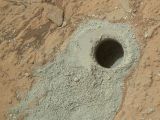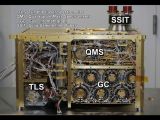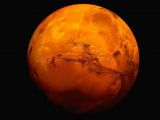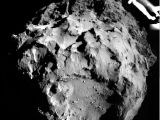Scientists with NASA are thrilled to announce that, after spending over 2 years exploring Mars, its Curiosity rover has finally detected the presence of organic molecules like the ones that birthed terrestrial life on this planet.
The Curiosity rover left Earth on November 26, 2011, and landed on Mars on August 6, 2012. The rover has since kept busy wondering around the Gale Crater, a geological structure believed to have formed 3.5 to 3.8 billion years ago.
Zooming in on organic molecules on Mars
Scientists with NASA explain that the organic molecules were detected in a mudstone sample that the Curiosity rover pulled from a site in the Gale Crater known as the Sheepbed. For those unaware, mudstone is basically a fine grained sedimentary rock.
Earlier this month, researchers announced that, according to evidence at hand, it is possible that the Gale Crater on Mars was once a lake. Hence, it's safe to assume that the mudstone found to contain traces of organic molecules came into being from sediment deposited by an ancient body of water.
It's important to note that the Gale Crater sedimentary rock sample whose makeup was analyzed by NASA's Curiosity rover was found to also contain several types of clay that, at least on Earth, are known to help preserve organic compounds.
The organic molecules detected with the help of the Curiosity rover's Sample Analysis at Mars (SAM) instrument include chlorobenzene and dichloroalkanes, such as dichloroethane, dichloropropane and dichlorobutane. Yes, it's perfectly OK if you didn't actually try to read these monikers.
Spikes in methane concentrations have also been detected
Interestingly enough, it appears that, since it arrived on the Red Planet until now, the Curiosity rover has also documented a series of spikes and then drops in the methane content of the atmosphere around it. This is important because methane too is an organic compound.
More precisely, scientists say that, towards the end of 2013 and at the beginning of 2014, the rover's SAM instrument recorded average methane concentrations of 7 parts per billion. During other readings, it documented concentrations of just 10% this level.
For the time being, researchers cannot say for sure where this methane on Mars might be coming from. Still, they say that there is a small chance that it could originate from living microbes not all that different to the ones found on our planet.
“This temporary increase in methane – sharply up and then back down – tells us there must be some relatively localized source. There are many possible sources, biological or non-biological, such as interaction of water and rock,” explains specialist Sushil Atreya with the University of Michigan.
“We think life began on Earth around 3.8 billion years ago, and our result shows that places on Mars had the same conditions at that time – liquid water, a warm environment, and organic matter. So if life emerged on Earth in these conditions, why not on Mars as well?” adds Caroline Freissinet of NASA's Goddard Space Flight Center in Greenbelt, Maryland.
These finds are not proof of alien life
Admittedly, organic molecules are the building blocks of life. However, the fact of the matter is that there are plenty of compounds that, although organic, have nothing to do with the emergence of life on one celestial body or another.
In fact, scientists detail that all compounds that have carbon included in their anatomy are classified as organic. Hence, these latest discoveries made by NASA's Curiosity rover should not be considered proof of alien life on the Red Planet.
To learn more about how organic molecules were detected on Mars and why NASA is so thrilled about this discovery, check out the video below.
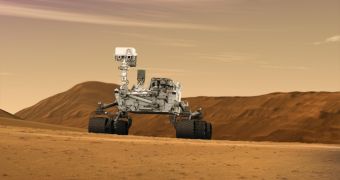
 14 DAY TRIAL //
14 DAY TRIAL // 

